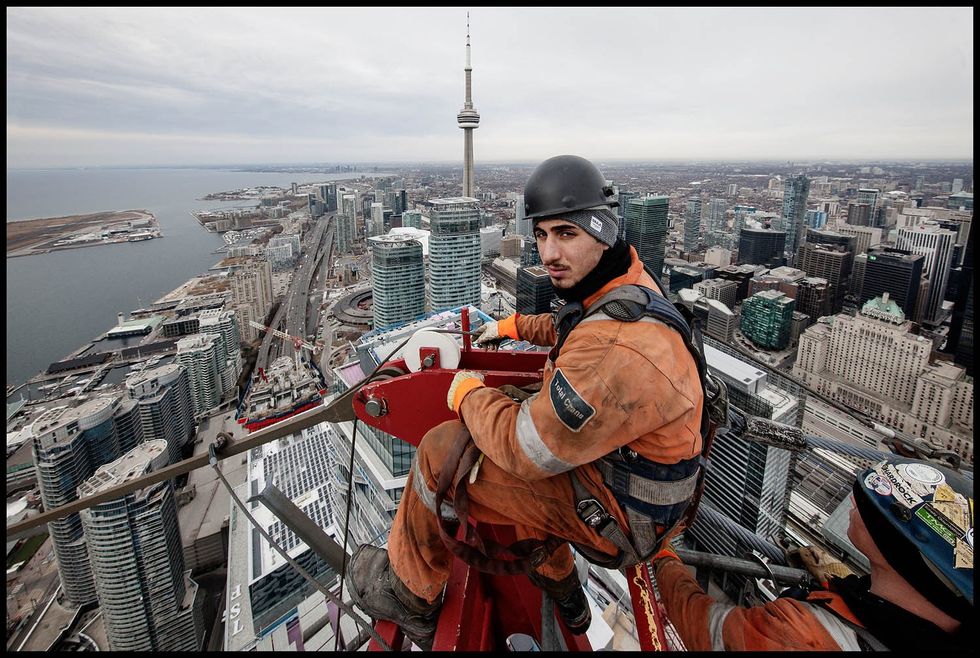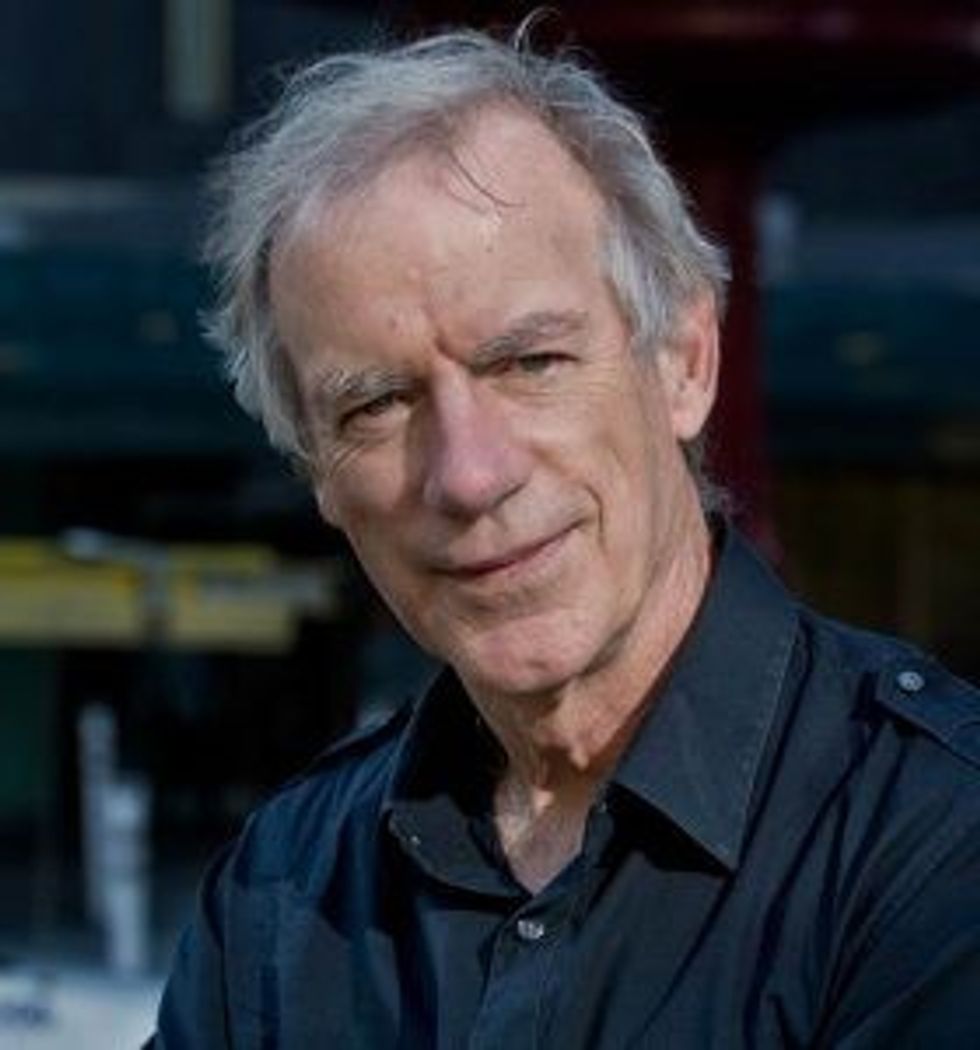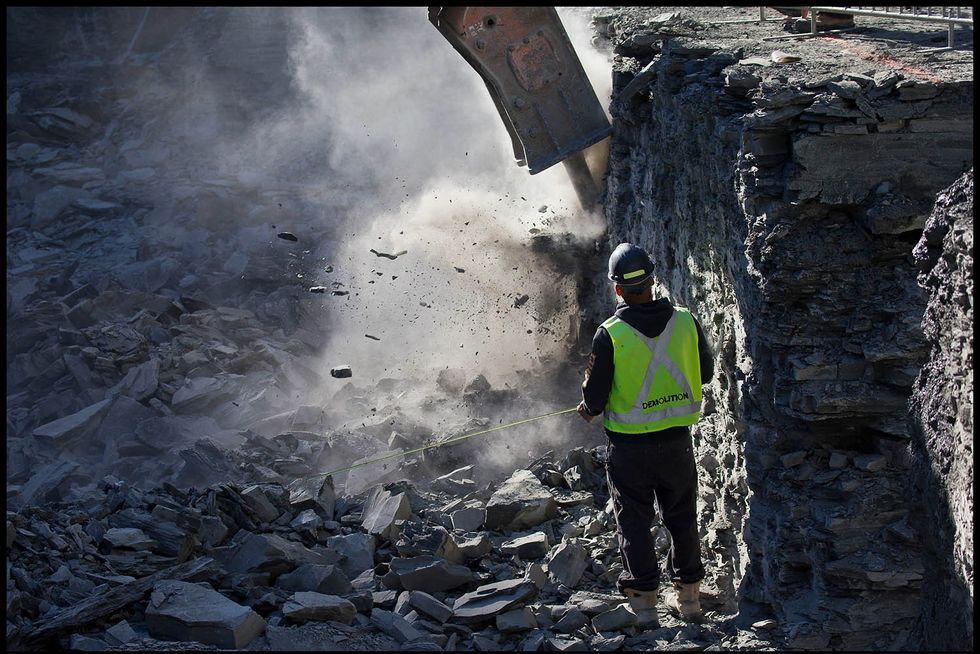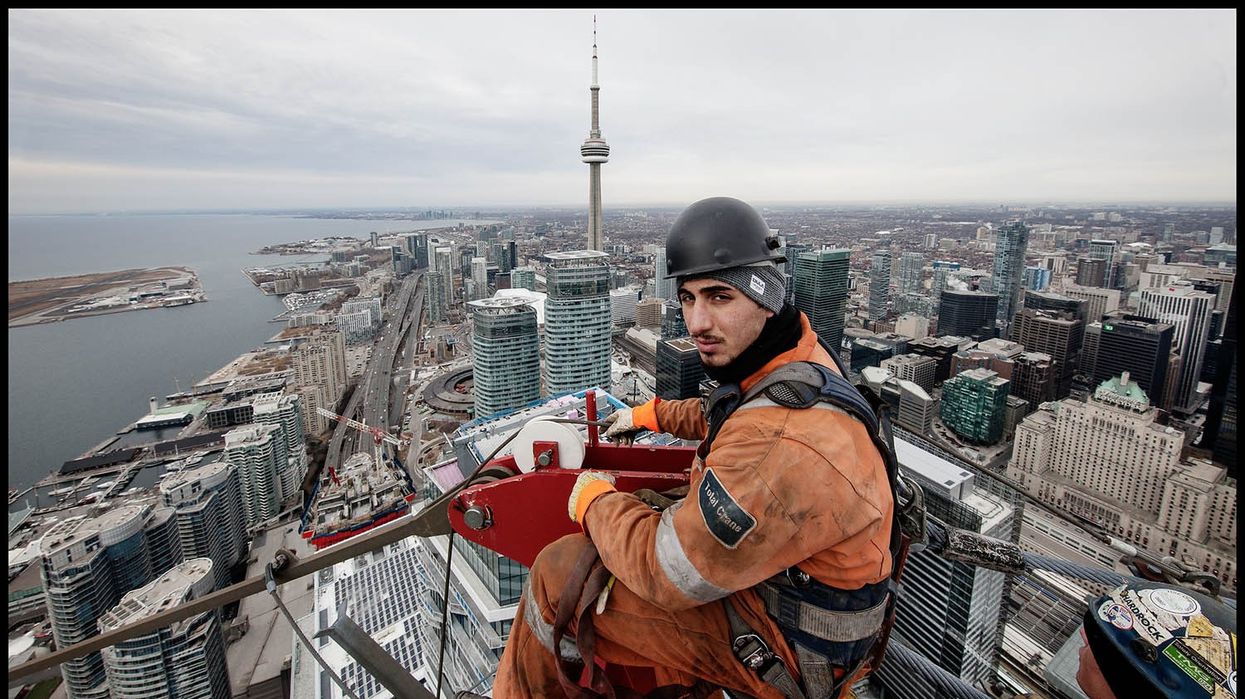
Do you ever watch the city of steel and glass rise up around you, and wonder what it looks like from up there? Do you ever think we’re changing so fast that we’ll forget what our neighbourhoods looked like one year, five years, 10 years ago?
Toronto photographer Paul Casselman is watching. And waiting. And he’s recording all of the little moments of Toronto, in transition. Perched atop the city in a crane, or perhaps on a bare upper floor in construction, Casselman gets into position — and he waits.
“Once you’re in a safe location, you’re just waiting — waiting for the light, waiting for the action,” he says. “You’re not just impulsively springing into action. You don’t run, you plan.”
And when the moment presents itself, Casselman takes it. “I reach my arms up as high as I can, over my head, and get my camera as far as I can put it,” he says. “If there’s a railing, I reach them up over the railing.
“The camera’s wrapped around my wrist, so it can’t fall.”
And another fleeting moment is captured at 300 feet.

Toronto Storeys is chatting with Casselman about his current photography exhibit — on display in the PATH system, where it connects to One York on the second floor — titled Transient Topography: High-rise Construction as Landscape.
In partnership with Menkes Developments — the sites are their projects, One York and Harbour Plaza — and part of the Scotiabank Contact Photography Festival, Casselman “chronicles the demolition of buildings and their rebirth and helps to build a sense of history to a development site.” He will attend his exhibit on Saturday May 6 to interact with the public and answer questions about his work.
Playfully dubbed the “original Crane Girl” for his stunning vantage points, Casselman praises the Menkes team for their trust in him, and the artistic freedom that affords.
“Fortunately my clients treat (our relationship) like a partnership,” he says. “They give me unfettered access and I give them a stream of pictures — they’ll use them for social media, they’ll use them in their advertisements, they'll use them in their reports to their partners.
“I go down to a site and work independently, to a huge extent. It’s really flattering how they’ve entrusted me to do what I need to do.”
Mimi Ng, vice-president of residential sales and marketing for Menkes, values the almost-10-year relationship she’s enjoyed with Casselman and the wealth of work he’s produced.
“He’s been able to document the evolution of some of these properties from the beginning,” she says. “The photographs are just terrific; I thought there has to be a way we can bring this to a larger audience.”
Ng says that Toronto’s rapid development — and near-constant construction — sparks a public interest in the raw beauty and stunning scale of some of these projects. She sees the amateur snaps on social media.

“The landscape is changing so quickly before our eyes,” she says. “Broadly speaking, in Toronto, I think there’s been a real increase in the level of interest in development, architecture and design — you really see that on Instagram, on Facebook.
“And I think Paul’s work is a bit of a love letter, or tribute, to the men and women who work on these projects,” she says. “The process of getting to that completed project takes hundreds of thousands of hours from hundreds of people … We thought it would be interesting for people to see parts of the process that, typically, they wouldn’t.”
Ultimately, Ng says, Menkes believes in the power of art to engage a community and bring life to their projects. Just down the path from this photo exhibit is the famed Banksy restoration, Guard with Balloon Dog.
“I think the (Menkes) family and the company believe in the contribution the creative arts makes to the social fabric of the city,” she says. “There’s no doubt that arts and creativity are a big part of people’s lives.
“The company has always understood that we’re in a great position, an enviable position, of being able to build the landscape of the city — but we’re keenly aware that we’re building spaces. We’re building spaces where people will live, where they will work, where people play and interact with each other.”
Its location in the PATH, she notes, is a meaningful space for contemplative work. Walking through the PATH, people are caught between a starting point and a destination, checking their phones, thinking about where they have to be or what they have to do.
“Public art is a way of bringing you back to the present,” Ng says. “Making you observe the here and now and really enjoy it, and be present in that moment.
“The company has always put an emphasis on art and trying to figure out how we can incorporate art into our projects in a meaningful way.”
LIGHT AND COLOUR
Ever fallen in love with a stranger walking along King Street at dusk?
Well, you’ve been seduced by an interesting byproduct of our city of condos. Casselman says our surroundings of steel and glass mean our streets are literally “aglow” with radiant light — the most flattering lighting, the photographer points out.
“What I really love is — especially at the street level — we have such phenomenal light for people to experience,” he says. “The light, the sun bounces off each of these glass buildings, and bounces from one building to the next, and our city at street level is aglow.
“The shadows are filled in by the bouncing and refracted light; it’s turning us all into movie stars. There are times when you can walk down the street and you’ve got million-dollar lighting. Everything and everybody that you’re seeing is so vibrant.
“It’s giving us lighting that human beings have never experienced before, other than Hollywood celebrities perhaps. I love that part of it, it’s beautiful.”
And unprecedented lighting is matched by extraordinary colour, he adds, while discussing the luminous beauty of one of his images of glass structures at dawn.
“There’s never been colours like this before,” he says. “I’m sure the great cities of the world have absolute fabulous colours, but 50 years ago, they didn’t have those colours. What’s happening now with LED lighting, the outlines of buildings are being done with lights.
“Our cities are radiant. It’s truly amazing.”
Casselman’s eye on the city’s ever-evolving, “breathtaking” landscape had produced an enormous bounty of images — from the raw materials to the workers, to the stunning skylines of unprecedented light and colour — and this exhibit, he says, is almost like giving back those gifts.
“We’ve put this one together to really say thank you to the community around the project,” he says. “When we realized we could do a show on the PATH, the first thought was that it would be really great for the people that live and work right in that area.
“They’ve been watching the project, and this is something we’ll leave up for them to have, for the next little while.”
The exhibit, initially scheduled to be on display until the end of May, will be extended into the summer. The Scotiabank Contact Photography Festival wraps up May 31. Visit pathphotoexhibit.com for more information.






















